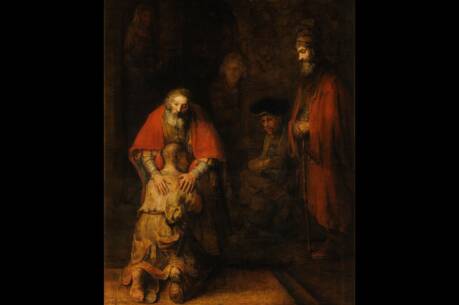Fearless Faith
In our most fearful moments, several things can quell our terror. An imagined threat passes; the light of day reveals that the forms so scary in the night were only shadows; a real, well-founded terror is dissipated when loved ones bear it with us. In today’s Gospel the disciples are terrified that the sea will swallow them up. It is a frequent occurrence on the Sea of Galilee, especially late in the afternoon, that strong wind squalls surge suddenly. The lake is ringed by hills that funnel the wind, which whips up the waves. The disciples’ fear is well founded as their boat begins to be swamped. Meanwhile, Jesus is peacefully asleep, like those the psalmist describes who rest undisturbed, having placed their trust entirely in God (Ps 3:5; 4:8).
When the disciples rouse Jesus, he rebukes the wind in the same way that he rebukes demons and unclean spirits (Mk 1:25; 3:12; 9:25), and it immediately obeys. Jesus’ questions to the disciples, “Why are you terrified? Do you not yet have faith?” are not so much a rebuke to them as they are a way of teaching them how to cross over from fear to faith. The disciples have addressed him as “Teacher” when they cry out to him (v. 38), and Mark portrays this as a teachable moment.
As frequently happens in the books of Wisdom, instruction is given through probing questions that lead the learner into deeper insight. This is the technique God uses with Job in the first reading for this Sunday. It is not with an accusatory tone that God asks Job about the primordial days. Job is in terrible anguish and has cried out in misery to God.
God’s answer in the midst of the storm is to point Job to the awesomeness of creation. The Creator speaks of having birthed the sea as it “burst forth from the womb,” and then of having put boundaries around it. Just as a mother wraps a newborn with “swaddling bands,” giving the child a sense of security as it enters a new and frightening phase of existence, so God bound the sea at its creation.
God does not explain or take away Job’s suffering as uncontrollable waves of loss threaten to swallow him up. Rather, the Holy One redirects Job to the awe and beauty of the created world and to the divine power that recreates it in ever new and magnificent patterns of generativity. Turning from his own misery toward the inscrutable designs of the Creator, Job allows himself to be transformed through the pain.
So too in the Gospel, Jesus’ questions point the disciples toward deeper understanding of the power of the Creator at work in himself and in them. It is a power that creates and recreates through patterns of death and rebirth. As God does with Job, Jesus does not explain away the disciples’ terror, but redirects them toward the One who is the creative power at the center of the universe. He leads them through their fear, enabling them to cross over into awe at the One whose re-creative power is manifest in Jesus’ stilling of every storm.
This article also appeared in print, under the headline “Fearless Faith,” in the June 8, 2009, issue.







